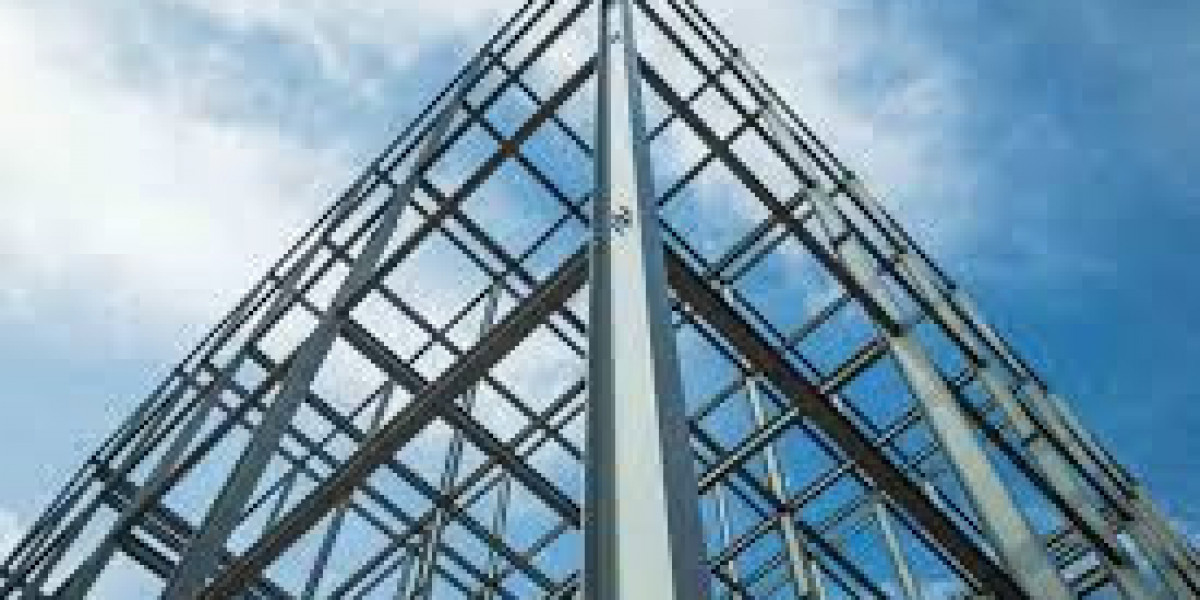The global push toward sustainable living has brought significant changes to how homes are designed and built. Among these innovations, light gauge steel (LGS) homes have gained remarkable attention—not just for their strength and durability, but for their energy efficiency. Unlike traditional construction methods that often prioritize cost over performance, LGS homes combine structural integrity with features that reduce energy consumption, lower utility bills, and contribute to a greener planet.
Whether you are a homeowner seeking long-term savings, a builder aiming for eco-conscious projects, or simply someone interested in modern construction trends, understanding the energy efficiency benefits of light gauge steel homes can help you make an informed decision. Let’s explore how this construction method is reshaping the future of sustainable housing.
What Is Light Gauge Steel Construction?
Light gauge steel construction involves the use of thin, cold-formed steel sections—often less than 3mm thick—manufactured in precise shapes through automated processes. These steel components form the framework of a building, replacing traditional wood or concrete structures.
Key features of LGS construction include:
Precision manufacturing for minimal waste
Corrosion-resistant coatings for longevity
High strength-to-weight ratio for better load handling
Non-combustible material for enhanced fire safety
Because of its adaptable design and controlled production, LGS offers consistent quality, which directly impacts a home’s energy performance.
How Light Gauge Steel Homes Enhance Energy Efficiency
1. Superior Insulation Capabilities
Light gauge steel frames are designed to work seamlessly with advanced insulation materials. The cavities between steel studs can be filled with high-performance insulation batts, spray foam, or rigid panels, significantly reducing thermal transfer between the interior and exterior.
Unlike traditional wood, steel does not warp or shrink over time, meaning the insulation remains effective for decades without gaps or leaks.
Energy efficiency impact: Stable indoor temperatures with less reliance on heating or cooling systems.
2. Reduced Thermal Bridging Through Smart Design
Thermal bridging occurs when heat travels through materials that are more conductive than the surrounding insulation. Steel, being a good conductor, can cause this if not addressed—but modern LGS design incorporates thermal breaks and insulation layers that minimize this effect.
Builders often use:
Insulated sheathing boards
Thermal break strips
Exterior continuous insulation systems
These techniques ensure that the steel’s conductivity does not compromise overall energy performance.
3. Airtight Construction for Lower Energy Loss
Precision engineering in LGS systems allows for airtight construction. Joints, connections, and panel edges are manufactured to exact measurements, ensuring fewer air leaks. This not only prevents drafts but also reduces the escape of conditioned air, making heating and cooling systems work more efficiently.
Airtightness also contributes to better indoor air quality by preventing outdoor pollutants, dust, and allergens from entering the home.
4. Compatibility with Renewable Energy Systems
Light gauge steel homes are structurally well-suited for incorporating solar panels, wind turbines, and other renewable energy solutions. The steel frame can support additional weight and integrate mounting systems without significant modifications.
When combined with renewable energy generation, the already low energy requirements of an LGS home can approach net-zero energy consumption.
5. Enhanced Lifecycle Energy Savings
While much attention is given to operational energy (the energy used while living in the home), LGS homes also score high in embodied energy savings. This is due to:
Recyclability of steel (100% recyclable without losing strength)
Reduced transportation costs due to lighter materials
Minimal waste during construction
The energy savings extend throughout the building’s life—from manufacturing to eventual dismantling.
Energy Efficiency Comparison: Light Gauge Steel vs. Traditional Construction
Feature | Light Gauge Steel Homes | Traditional Wood/Concrete Homes |
Insulation Performance | Works seamlessly with high-performance insulation; maintains integrity over time | May degrade over time due to warping, settling, or moisture damage |
Thermal Bridging | Reduced through thermal breaks and continuous insulation | Higher risk of heat loss without specialized insulation |
Airtightness | Precision construction limits air leakage | More prone to gaps and drafts over time |
Renewable Energy Integration | Strong, adaptable frames ideal for solar/wind systems | May require reinforcement for heavy installations |
Lifecycle Energy Impact | Recyclable materials and low waste production | Higher waste during construction and limited recyclability |
Durability | Corrosion-resistant, non-combustible, long lifespan | Vulnerable to pests, rot, and fire |
Analysis of the Table
From the comparison, it’s clear that light gauge steel homes outperform traditional construction methods in nearly every aspect of energy efficiency. While wood and concrete homes can be energy-efficient with upgrades, they often require more maintenance, retrofitting, and material replacement over time. LGS homes, by contrast, deliver built-in energy savings through design precision, insulation compatibility, and material longevity.
These efficiency gains translate into lower monthly utility bills, a reduced carbon footprint, and increased property value—especially as sustainable building standards become more important in the real estate market.
Practical Tips for Maximizing Energy Efficiency in Light Gauge Steel Homes
Choose Continuous Exterior Insulation
This provides a thermal barrier around the steel frame, minimizing heat loss.Select High-Performance Windows and Doors
Double or triple-glazed units with low-emissivity coatings help retain indoor temperatures.Incorporate Renewable Energy Systems Early
Plan for solar panel placement and wiring during the design phase for cost savings.Invest in Quality HVAC Systems
Energy-efficient heating, ventilation, and cooling systems complement the airtight nature of LGS homes.Schedule Regular Maintenance
While steel structures require less upkeep, maintaining seals, insulation, and renewable systems ensures consistent efficiency.
Frequently Asked Questions
Q1: Are light gauge steel homes more expensive to build than traditional homes?
Initially, LGS homes may have slightly higher construction costs due to specialized manufacturing, but the long-term energy savings and reduced maintenance costs often make them more cost-effective over their lifespan.
Q2: Does steel framing cause homes to lose heat faster in winter?
Without proper insulation, steel can conduct heat more readily. However, modern LGS designs incorporate thermal breaks and continuous insulation to prevent significant heat loss.
Q3: Can I retrofit an existing home to have LGS framing?
While possible, it is more practical to use LGS in new construction or large-scale renovations, as retrofitting can be labor-intensive and costly.
Q4: How do LGS homes perform in extreme weather conditions?
They excel in durability—resistant to high winds, earthquakes, and even fire—while maintaining structural and energy performance.
Q5: Are LGS homes environmentally friendly beyond energy savings?
Yes. Steel is 100% recyclable, reduces construction waste, and supports sustainable building certifications like LEED.
Conclusion
The shift toward sustainable, energy-efficient housing is not just a trend—it’s a necessity for future generations. Light gauge steel homes offer a winning combination of durability, precision engineering, and superior energy performance. By reducing thermal loss, enhancing insulation, and supporting renewable energy integration, LGS homes deliver substantial environmental and financial benefits.
For homeowners, this means lower utility costs, greater comfort, and the satisfaction of contributing to a more sustainable planet. For builders, it represents an opportunity to meet growing demand for eco-friendly housing without compromising on strength or style.
If you’re planning to build or invest in a new home, consider the energy efficiency advantages of light gauge steel construction—a forward-thinking choice for a greener, smarter future.













